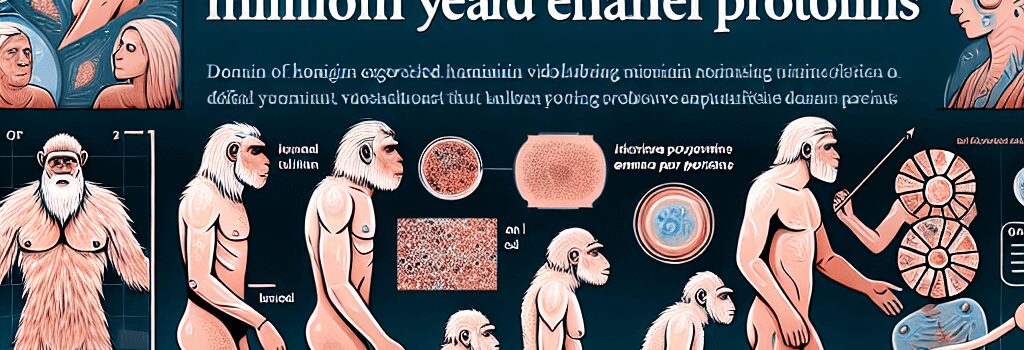Hominin Evolution via 2-Million-Year-Old Enamel Proteins

The limits of ancient DNA preservation have long constrained our understanding of early hominins, especially those that flourished in the challenging climates of Africa. Now, a multidisciplinary team has harnessed the durability of tooth enamel and cutting-edge mass spectrometry to recover and sequence fragments of proteins from Paranthropus robustus teeth dated to ~2 million years ago. Their findings not only confirm the taxonomic unity of this enigmatic genus but also refine our understanding of sexual dimorphism, evolutionary relationships, and future directions in paleoproteomics.
Proteomic Analysis Unlocks 2-Million-Year-Old Secrets
DNA typically fragments and degrades beyond recovery after 100,000–500,000 years under ideal conditions. In contrast, enamel—nature’s hardest bioceramic—encases proteins that can survive much longer. By applying high-resolution liquid chromatography–tandem mass spectrometry (LC-MS/MS) on a Thermo Fisher Q Exactive™ HF mass spectrometer, researchers isolated six enamel proteins, covering 425 amino acids across four fossilized teeth from South Africa’s Cradle of Humankind.
Key Methodological Specifications
- Sample preparation: micro-drilling to extract ~5 mg enamel powder per tooth
- Protein extraction buffer: 0.1% trifluoroacetic acid (TFA) with 6M guanidine hydrochloride
- LC gradient: 5–35% acetonitrile over 90 min at 300 nL/min
- MS/MS acquisition: data-dependent top 15 precursors, HCD fragmentation at 28% normalized collision energy
- Database search: MaxQuant v2.2.0.0 against a custom hominin proteome reference
A Complex Hominin Puzzle: Paranthropus in Context
First appearing ~3 Ma and persisting until ~1.5 Ma, the robust australopithecines overlapped both Australopithecus and early Homo. Four species have been proposed within Paranthropus, and significant intraspecific variation—particularly in body size—sparked hypotheses of pronounced sexual dimorphism. However, prior attempts to assign sex based on skeletal metrics remained inconclusive.
“The recovery of male-specific AMELY peptides from a small tooth defies the assumption that size correlates directly with sex in Paranthropus,” says Prof. Enrico Cappellini, senior author and paleoproteomics pioneer at the University of Copenhagen’s Globe Institute.
Data Analysis and Phylogenetic Insights
Of the six proteins identified—AMELX, AMELY, ENAM, MMP20, KLK4, and AMBN—AMELY derives from the Y chromosome and serves as a definitive male marker when detected. In this study, two teeth yielded AMELY-derived peptides, including one previously classified morphologically as “female-sized.” This overturns simple sexual dimorphism models and suggests ecological or developmental factors drove size variation.
Beyond sex identification, the team performed a maximum-likelihood phylogenetic analysis using MEGA X, incorporating 16 species-specific amino acid polymorphisms. Bootstrap support of 75% placed P. robustus closer to Homo than to other australopiths—a provocative result pending validation with larger sample sets.
Statistical Workflow
- Alignment of 425 amino acid positions across 10 hominin and 4 non-hominin outgroups
- Model selection via Akaike Information Criterion (AIC)—LG+G+I chosen
- 1000 bootstrap replicates to estimate node support
- Comparison to simulated human genomes to gauge intraspecific variability
Future Directions and Ethical Considerations
As paleoproteomics enters its golden age, researchers face the dual challenge of destructive sampling versus the imperative to preserve irreplaceable fossils. Non-invasive imaging (μCT scans) and microradiography can guide sampling to regions with maximal protein density. Meanwhile, improvements in peptide amplification and in silico de novo sequencing promise to boost recovery from sub-milligram samples.
Expert Opinions
- Dr. Katrine Sunde: “Integrating deep learning for peptide spectrum prediction could increase identification rates by 30–50%.”
- Prof. Bernard Wood: “These methods may finally allow us to revisit long-standing debates on hominin speciation in East Africa.”
With the publication of Science DOI:10.1126/science.adt9539, the field is poised for rapid expansion. The next phase will demand international collaboration, standardized protocols, and open-access peptide databases to map the proteomic diversity of extinct hominins and redefine our evolutionary narrative.